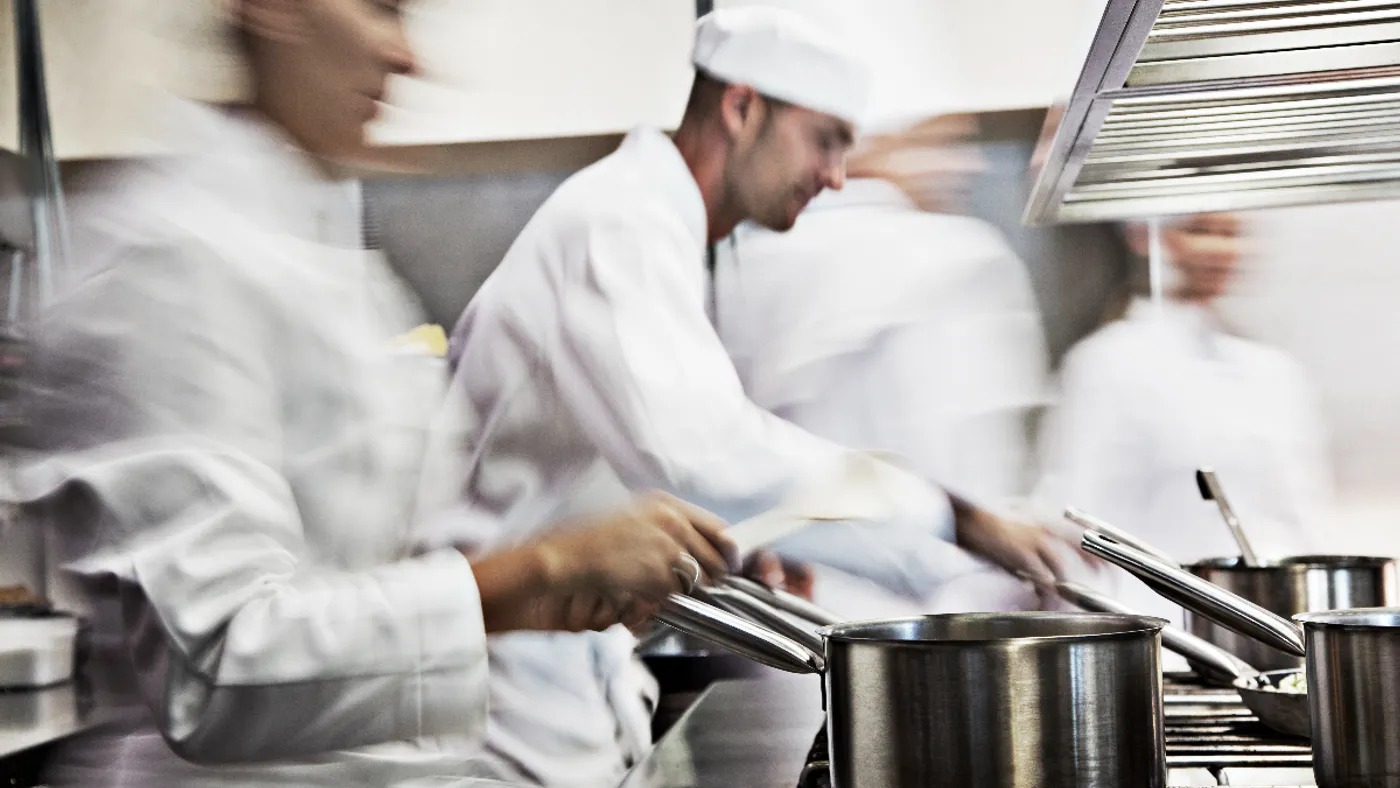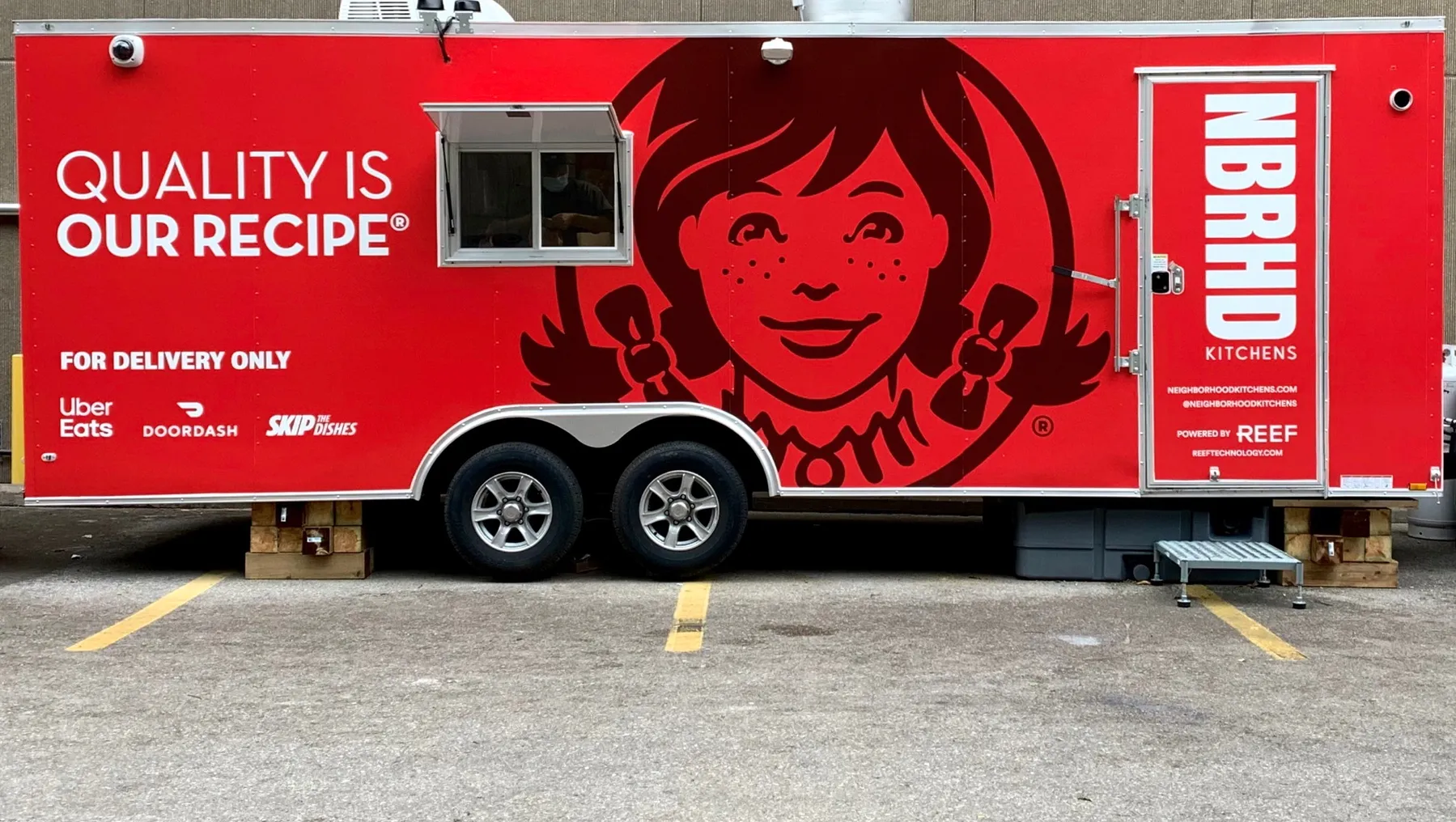
5 trends that will shape the restaurant industry in 2023
Though 2022 marked a return to financial health for many restaurants and adjacent businesses as the pandemic’s peak disruption faded, the new year holds continued challenges for operators, experts say.
As inflation drives up menu costs and shrinks consumers’ discretionary spending power, many diners will choose to trade down by visiting inexpensive categories like QSRs or by ordering value-focused meals, sources said. Low-income consumers may cut back on their restaurant frequency altogether, so restaurants will need to be strategic with menu pricing — especially since a volatile supply chain is expected to hike ingredients costs amid shortages and delays.
“Restaurants are treading water, but it’s in the form of modest declines in transaction volume being countered by increases in spend per transaction that are at or slightly above the rate of inflation,” said Andrew Custage, head of insights at Medallia Market Research.
So far, consumers are only dining out 10% less than they were in 2019, said Paul Westra, managing director of restaurant investment research at Capital One, said.
The job market also remains strong and consumers have $1.7 trillion in extra cash compared to 2019, Westra said. While that dollar amount is shrinking, it could provide a cushion for restaurants for most of 2023.
“Any slowdown and recessionary impact will probably be occurring in the third or fourth quarter [in 2023]” Westra said. “Restaurants have a window here to recoup some of their lost profitability.”
Supply constraints will disrupt restaurant development plans, as construction delays increase the cost to build and renovate restaurants. An ongoing labor shortage will push restaurants to find operational efficiencies. In 2022, restaurants already cut operating hours by an average of 6.4 hours per week compared to pre-pandemic, according to a Datassenial report. For independent operators, that hourly reduction jumps to 7.5 weekly hours.
“With these challenges, with the supply chain, and the employees and everything else, you’ve got to get money, and money's gonna come either as debt or equity. And when you look at debt, a lot of banks won’t lend to restaurant companies,” said Jay Halpern, partner at ArentFox Schiff.
Some pandemic-era restaurant models may begin to lose relevance in 2023 as well, experts said. Ghost kitchens, for example, may struggle amid slowing delivery demand and food quality struggles, said Rishi Nigam, CEO of Franklin Junction. In 2022, some prominent platforms in the ghost kitchen space began to see restaurant deals fall through despite the ongoing success of Kitchen United, one of the first players in the game.
The new year may hold new opportunities for restaurants despite obstacles, however, experts said. Diners still crave premium experiences from their restaurants, said Zhong Xu, CEO and co-founder of restaurant ordering platform Deliverect.
Consumer demand and food spending dollars may also hold steady enough in 2023 to help improve the restaurant category’s recovery, Westra said.
“I think restaurants will succeed in clawing back the vast majority of their lost profits from the last 18 months. I think they’ll have an ability to take the necessary pricing. They’ll be able to go back to their suppliers and get the necessary disinflation to rightset their margins,” Westra said. “The consumer is strong enough … for that to occur at least for the first half to three quarters of next year before we probably see a slowdown in the macro economy and consumer.”
Learn more about five trends experts predict will shape the restaurant industry in 2022.

Diners will trade down, but still value premium experiences
Price has become an increasingly important driver of consumer decisions, Custage said. In an August 2022 survey, Medallia found 49% of respondents cited price as a driver of household decisions, compared to 29% a year prior. That percentage has held steady over the past few months, Custage said.
A larger portion of restaurant transactions are coming from affluent customers, as low-income customers find ways to cut back on transactions at eateries, Custage said.
“But I do think there is still some trade down occurring where maybe if somebody was going to a sit-down restaurant beforehand, they’ll turn to takeaway fast casual or quick-service restaurants more often,” Custage said.
Many major brands have been increasing menu prices to make up for inflation and wage pressure. But customers would prefer if restaurants implemented a mix of cost adjustments, such as service reductions or smaller portion sizes, Custage said.
“A little over half of people would prefer this blended approach,” Custage said. “That’s better than keeping everything as is and making prices jump even higher in order to continue affording all of it from a restaurant’s … perspective.”
Climbing prices aren’t necessarily keeping customers away, however.
“Brand perception about affordability has gone down quite a bit more than any other attribute, but it might not be enough to really get a consumer to turn away from restaurant purchases fully even if they’re a little bit frustrated about how expensive it has gotten,” Custage said.
Customers may be willing to pay premium prices for dine-in experiences or meals with prestigious brands, Xu said. Xu cited instances of restaurants in New York where customers waited in line for 45 minutes to get tables as an indicator of strong customer preference for brands with notably high quality.
“You would think with inflation, pricing, everything costing more people would pay less for quality,” Xu said. “They want to have that extra experience and not do something normal.”
Another shift in consumer behavior is occurring at Titan Hospitality Group’s fine dining restaurants. Customers are increasingly dining at the bar, James King, founder and CEO of Titan Hospitality Group, said. Typically the bar has had more drink sales, but food sales have been increasing over the past six months. This has been a favorable trend for his restaurants, since it increases sales and keeps diners around longer, he said.
“We like this trend. It’s a great thing for us and we're having conversations now about how do we expand on that and make [the bar] more dining friendly and really entice people,” King said. “It helps us turn seats and takes a little pressure off the kitchen because it’s coming in at different times.”
Price will eventually take a toll on consumer spending habits regardless of how or where they dine, Custage said. Medallia asked consumers how much a five-point increase in the inflation rate would impact their spending. Although the question is a bit vague about exactly how much people would change, 96% said they would at least change their spending habits.
“I think [this] is indicative that people are reaching a breaking point soon, especially when over two in five Americans say they’re barely or unable to make ends meet with household budgets as it is today,” Custage said.

Tight labor markets will make efficiency vital
Labor markets may cool as the Federal Reserve continues to raise interest rates in hopes of increasing unemployment. But that may not happen for a while: Bureau of Labor Statistics data shows foodservice wages are likely still climbing, reaching $17.24 an hour in October. Sectoral employment has also increased in recent months, topping 11,898,000 in preliminary numbers for November, while unemployment numbers have held relatively steady. The quit rate in foodservice also remained steady in later 2022, hovering between 5.6% and 6.2% depending on the month.
Given high turnover, low unemployment, growing wages and rising employment in foodservice, employers are likely to prioritize efficiency as workers remain harder to find and more expensive to train and employ than in 2019.
For Titan Hospitality, the push toward efficiency has meant increasing the prep work done in advance of shifts, according to King. Cooks are working to get dishes prepared as much as possible without cooking, which means all line cooks have to do during a rush is pop it in the oven.
Restaurants are increasingly adding pay at table or tableside ordering, which is helping reduce front-of-house costs by 30%, Peter Dougherty, GM of hospitality at Lightspeed, said.
“It’s about reducing labor costs as much as possible without affecting the guest experience or affecting it the least amount as possible,” Dougherty said.
Nigam said the push for efficiency, and the general labor market tightness, means pre-pandemic staffing levels are unlikely to ever return in some segments. High-volume restaurants and full-service restaurants emphasizing experience may be able to sustain high staffing levels, but many other concepts will feel considerable pressure.
“I don't see restaurants ever going back to having 20 people in a fast casual restaurant,” Nigam said. “I think you're gonna lose a lot of middle ground here along the way.”
One issue that’s unlikely to change is turnover, Halpern said. Mass layoffs in 2020 changed the way many workers think about their jobs, and the premium restaurants are willing to pay qualified staff may keep workers moving from job to job. Publicly traded companies, subject to the short-term interests of investors, may find it hard to make serious investments in staffing, Halpern said.
One way to combat turnover, Halpern suggested, is to improve aspects other than pay, like workplace culture.
“I feel like the opportunity is really building culture,” Halpern said. “You’re always subject to someone paying yet another dollar.”
Titan Hospitality has increased its training, King said. The company is focusing on hiring younger workers with personalities compatible with the company’s culture and then training them intensively for several weeks.
Darcy Kurtz, CMO at BentoBox, said continued staffing shortages may lead restaurants to be more flexible in turning ordering channels off.
“Instead of having to just close and to be closed for a day, they can do kind of a modified operating model where they're doing just the online ordering,” Kurtz said.
More drastic measures, like full automation, may be unlikely, according to Nigam.
“It might be the unpopular position, but I don't see robots replacing anything to be honest. Maybe 20 years from now you'll see fully robotic restaurants,” Nigam said.
David Madland, a senior fellow for the American Worker Project at the Center for American Progress, agreed, saying that the exogenous shocks to the labor market in recent years dwarf sustained pressure from turnover.
“We already had the biggest possible intervention in the labor market that anyone could imagine: COVID-19. And it didn't fully transform or automate these jobs,” Madland said in an interview for Restaurant Dive’s coverage of the FAST Recovery Act. “It slightly changed the jobs.”
Continued labor shortages may benefit workers by driving up wages, and may benefit unions by making workers feel more secure in their employment and less afraid of temporary unemployment, though macro-economic changes, including a recession, could change that dynamic.

Smaller menus, dynamic pricing could protect bottom lines
Restaurants will need to take a hard look at menu strategy and dollars spent on sourcing in order to protect the bottom line amid fluctuating ingredient costs and operational pressures, experts said.
“[Restaurants] are definitely going to have to figure out how to have a more streamlined menu that doesn’t necessarily serve every taste of the people coming in. … They’re having to get more precise with what their offering is … because it costs too much to carry that many different offerings on the menu,” Kurtz said.
The costs of ingredients are so high that they can’t be fully passed on to the consumer without hurting sales, and diners are already growing wary of high menu prices, Kurtz said.
“The ability to know what you’re going to sell days in advance to prep correctly and labor schedule correctly is mission critical for restaurants to become efficient,” Westra said.
Menu prices will continue to rise in 2023, but at a slower pace (5%) than last year, which saw prices grow about 8%, Westra said. Specifically, restaurants should be taking 200 basis points more in pricing than their food, labor and energy cost increases to protect margins without hurting sales, he said.
To successfully trim menus, as many major restaurant chains did in 2022, operators will need to launch a total strategic review of food offerings and cull items that are the least profitable, Westra said. Even menu items that are well-liked by diners but create additional complexity due to the total ingredient mix or the preparation of that item, should be considered for cuts.
“If you have that no sacred cow point of view, you’d be shocked that certain items could be causing significant inefficiencies and product loss,” Westra said.
Kurtz doesn’t expect smaller menus to curb diner excitement around eating out, despite rising costs.
“The [restaurant] discovery process is becoming more visual. It's becoming more experience-oriented … that will offset any decline [in interest] because the menu isn't quite as big as it used to be,” she said.
Dynamic menu pricing could also help restaurants maximize profit during peak hours, Xu said, and digital technology could help operators change their offerings or prices several times a day. Deliverect is working with many restaurants to implement dynamic menus and to make it easier for restaurants to change menu prices, he said.
“These days, we see restaurants have baseline pricing, and then they do a lot of experiments where they say, ‘hey, this weekend during these times, the price will rise by 20%’ depending on peak hours, events, weather,” Xu said.
But Nigam thinks that as this solution becomes more common, it could be met with customer resistance.
“There’s going to be a bit of [a dynamic pricing] adoption curve for consumers, because there's so many substitute options for food,” he said. “So unless you're making something that people just have to have, [for example] Chick-fil-A has obviously dominated … that chicken sandwich product. So if you have something like that, you can demand different pricing based on cost, based on time of day.”

Ghost kitchens will face economic headwinds
Ghost kitchen companies finished 2021 on a high note, signing expansion deals left and right. But 2022 saw many of these businesses punished by softening delivery demand and higher capital costs. Lack of consumer trust in online brands may also be a stumbling block for this sector, Nigam said.
“You could try to order food from Uber or DoorDash or whatever. And there's like 85 restaurants on your street that are just kind of made-up restaurants, all coming from the same two buildings. But there's no quality control,” he said. “I think people are going to want to go pick up their food, I think they're going to want to know where their food is coming from.”
According to Nigam, customers will look for brands they know and recognize. Another factor driving the success of some ghost kitchen and virtual brand companies and the failure of others, is disparate familiarity with restaurant operations, Xu said.
“You have ghost kitchens built by real restaurant operators and brands that have been quite successful,” Xu said. “[There are] ghost kitchens built by pure techies, they thought ‘hey, let's set it up, how hard can it be?’ and then [they] realize that it's very much an operations game as well a brand game.”
Consistent quality in food production is what will differentiate ghost kitchen concepts that succeed from those that fail, Xu said.
There are more significant limits to ghost kitchens in the U.S. compared to European and Asian markets, Nigam said. The population density of American suburbs may mean delivery is simply not economical for many concepts, limiting the reach of ghost kitchens to a handful of more densely populated major cities.
Even ghost kitchen concepts based in major downtowns are not immune to failure: Butler Hospitality, whose hotel ghost kitchen operations were based primarily in city centers, collapsed in May 2022.
Still, some ghost kitchen companies have found ways to adapt or have continued to grow. Kitchen United, for instance, raised $100 million in Series C funding last July, partly from Kroger, Restaurant Business International and Circle K. In December, Saladworks opened two units in Kitchen United Food Halls in two Ohio Kroger stores.
Restaurant operators have deserted Travis Kalanick’s Cloud Kitchen concept in droves, according to Business Insider. Meanwhile, Reef’s major ghost kitchen partnerships have seen shakeups, with Wendy’s canceling the vast majority of its projected units. Reef has attributed Wendy’s move to a change in Reef’s overall strategy, which prioritizes multi-branded units and locations in places like stadiums, hotels and airports.
“I think ghost kitchens are dead,” Nigam said. “We don't have to beat that horse anymore. I don't think that that idea has worked out too well.”

Supply chain shortages to impact operations, growth plans
Restaurants will continue to be plagued by supply chain and construction delays in 2023 as labor shortages continue to tighten supplies, Nigam said.
“Most restaurant operators are probably not going to see immediate relief anytime soon on the supply chain side. And so we're gonna have to figure out a way to continue to generate sales in a manner that is a balance between increasing prices, but also finding savings and other places and really delivering value to customers,” Nigam said.
The impact of supply chain shortages has shifted how Titan Hospitality develops its menus. Product availability and cost have led the company to change its menu development from twice a year to quarterly. It’s more expensive to maintain this frequency of menu development due to printing costs, but King sees this strategy as necessary to stay ahead of ongoing supply challenges.
Titan Hospitality has focused on menu items that it can cross-utilize so it can achieve consistent food quality and sell items at a reasonable price. The company used to sell jumbo crab meat, but the cost of this ingredient rose to $65 per pound so the restaurant took it off the menu. But it’s not always easy to make such menu changes. Potato prices spiked 63% last year, but it’s nearly impossible to take items like french fries off the menu, he said.
King expects current supply chain and inflationary pressures to last at least two years before stabilizing. With so many different issues compounding, including the war in Ukraine, this isn’t a two-month problem, he said.
Product availability isn’t the only supply chain issue impacting restaurants, either. Titan Hospitality is also in the process of building two restaurants and it’s taking 16 weeks to get materials and 30 weeks to get a walk-in freezer box. There aren’t enough electricians and plumbers to complete work within a typical three-week time span. These delays are extending construction timelines, putting the company 30% over budget on these projects, King said. A new build of a fine dining restaurant usually takes four to six months to complete.
Titan’s experience isn’t uncommon. Inflation and supply chain issues are driving up the cost to build, Halpern said. Businesses that are expanding and have the money to do so are running over budget and blowing past deadlines. Businesses are paying for leases without the additional revenue to start building cash flow, but can’t open because certain equipment hasn’t arrived, Halpern said.
“It drives the cost structure out of whack, because if you can’t build it in the timeframe that you thought, you can’t open in the timeframe that you thought. Supply chain is a really, really big deal,” Halpern said












